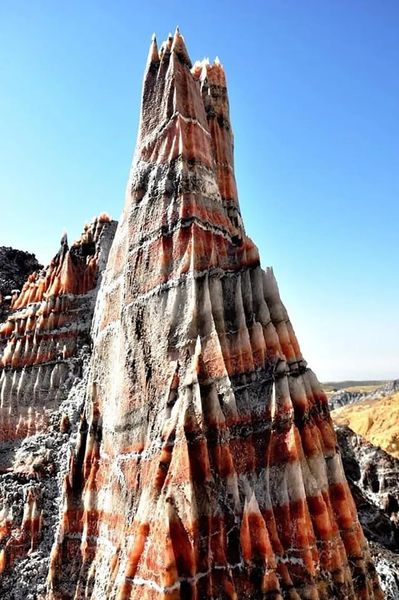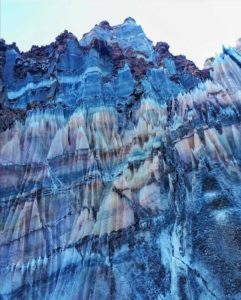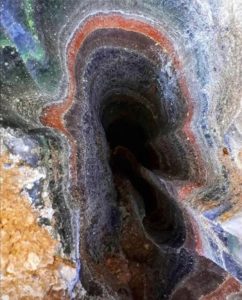
Salt Domes And Salt Glaciers of Zagros Mountains, Iran. The salt domes can be observed in south, southwest, and central areas of Iran. The salt domes are one of the main units of structural geomorphology of Iran. Those with highest density are formed in Zagros Folded zones, Persian Gulf region, and rarely in central Iran and Azerbaijan. The main area the domes are originating is Hormoz Formation related to Infra-Cambrian.
The salt domes in central of Iran are associated with Eocene deposits, Lower Red Formation and the base of Upper Red Formation. The Fars Province is ranked first in frequency of salt domes. Then, the most frequencies are, in an order, the provinces of Hormozgan, Kerman, Semnan, and Ghom. Some islands of Persian Gulf including Hormoz, Lark, and Hengam are mainly composed of these salt domes.
Some of the salt domes of Iran are unique in the world. There are including Jashak Salt Dome in Bushehr County, Namakdan in Gheshm Island, Kenar Siah and Jahani in Fars Province, Anguran in Zanjan, and Ghom in Ghom County. These salt domes have characterized landform identity and can readily be identified from the surrounding features. The features resulted from these landforms are very diversified, beautiful, and unique. They represent a particular geologic evolution process. These salt domes have various karstic morphologies including caves and waterfalls as well as also salt glaciers.
Not anywhere in the world, such cumulative of salt domes can be seen. Only in the southern part of the Zagros Mountains, there are more than 130 salt domes which affected the structure of Zagros Mountains as one of the most significant simple folded systems in the world. Salt Domes of Iran are unique in terms of diversity, form and formation procedure and development.
Existence of longest salt cave in the world with more than 6400 meter deep in the Namakdan Mountain, existence of salt glaciers, salt waterfalls, salt valleys, karst sinkholes, lapyh and fungal and cauliflower forms, salt springs are from unique characteristic of salt domes. Meanwhile through northern half of the Iran, salt domes with cap rocks has given this area a unique beauty and sight which can rarely be found in other parts of the world. In many of these salt domes, outcrop has appeared over salt rocks which showcase a stunning scenery.
On the other hand, during the process for movement of salt domes toward top, sediments and rocks of different geological periods with salt and through sidelines has moved upwards that exquisite sceneries of accumulation formations from different eras with different origin have formed.
Criterion (vii): the salt domes of Iran are the outstanding features in the world and the salt cave in Gheshm Salt Dome is the longest salt cave of the world.
Criterion (viii): the salt dome is both a geologic feature (diapirism) and a geomorphologic feature formed by the upward movement of lower salt layers to the surface. Diapirism is a process during which the materials with lower specific weight break the upper layers and appear at the surface. This geologic phenomenon with its formative process and diversity in form and age indicates two distinguished geologic and geomorphologic evolution process. In fact, they represent outstanding example of the evolution of geologic history.




